The Tidecloak of the Pearlborne Isles
“The sea guards secrets, and so shall we.”
The Tidecloak is the signature ceremonial garment of the Pearlborne Isles, a mantle of heritage and pride. Crafted from ocean-dyed silks that catch the light like waves at dawn, it seems almost alive as it moves, its subtle shimmer echoing the sea that shaped the Isles themselves. Intricate silver embroidery curves like curling tides across its surface, and each cloak is adorned with real pearls and patterns that speak to the wearer’s station and story. While its craftsmanship alone draws the eye, the true weight of the Tidecloak lies in its meaning. It is not simply attire, it is defiance worn proudly, loyalty draped across the shoulders, and a whispered prayer to the gods of the sea. Each cloak is a pledge of allegiance to the fading royal line of Vylerria. Once, these garments were marks of naval authority, but now they stand as symbols of tradition, resilience, and enduring pride in a time when the Pearlborne Isles face mounting threats from piracy and political erosion.
At the centre of every Tidecloak rests a clasp, crafted to resemble an open oyster cradling a single perfect pearl. This is no arbitrary decoration. It is the Royal sigil of Vylerria, a symbol of purity, wisdom, and the sacred mysteries of the sea. Though ornate, the Tidecloak is surprisingly light. It weighs around two pounds and is tailored to allow graceful, unencumbered movement whether one is walking the marble halls of Vylerria or standing at the prow of a ship during a blessing ceremony. The male-cut version reaches to the mid-thigh, often with a slight taper or longer back panel designed to mimic the look of a sail caught in the wind. The female version falls just past the knee to mid-calf and tends to drape more fluidly, allowing the silk to sway like gentle surf with every movement. When fastened fully, the cloak wraps generously around the torso, layered without ever feeling cumbersome.
Currently, Tidecloaks range widely in price depending on rank and embellishment. A nobleman’s cloak costs around 600 gold pieces and is typically worn by minor aristocrats, respected merchants granted honorary court positions, or temple acolytes. A Royal-commissioned cloak, however, is another story entirely. Worth upwards of 2000 to 3000 gold, these masterpieces feature genuine pearls, thread infused with enchantment, and embroidery tailored to the wearer’s personal lineage or deeds.
Tidecloaks are considered rare. Their true versions are reserved for the noble class, court-appointed officials, and members of the Temple of the Tide. Many copies exist, but they rarely survive close inspection. The lack of magical shimmer, authentic pearls, or divine blessing gives them away instantly and wearing a forgery at a Royal function is a risk not worth taking.
History
Origins in Naval Might
The Tidecloak’s story begins during the kingdom’s Age of Sails, when Vylerria’s navy was more than a fleet it was a force of legend. Back then, high-ranking officers needed garments that could withstand ocean winds and speak to their command. The earliest cloaks were heavy and practical, dyed in deep teal and made from thick wool. Their collars stood stiff against salt spray, their hems weighted to avoid flapping in the gusts, and their clasps were functional slabs of iron etched with house crests. They were military garb, not regalia but even then, they held meaning. As naval power grew and battles were won, the officers’ cloaks became more than uniforms. They became banners of pride. Embroidered symbols were stitched to commemorate victories at sea. Silver threads mapped the tides of battle. And so, the cloak began its slow transformation from utility into ceremony.The Creation of The First Tideclock
The Tidecloak is descended from the naval officer cloaks of Vylerria’s Age of Sails. Though its modern incarnation is ceremonial, the drape, cut, and fastenings still echo its maritime origin. The very shape of the cloak nods to its history: flowing like the wake of a ship, yet able to wrap and protect as the old naval coats once did. The first Tidecloak was commissioned by Admiral Sereth Vaelos, a figure both feared and beloved in his time. He wanted his officers to command respect not only with steel and seamanship but with presence. Even now, the Royal house and the Temple of the Tide are the spiritual stewards of the cloak’s tradition, and the highest rituals still require their blessing. The craft of making Tidecloaks relies on magical textile weaving, a subtle art that blends the mundane with the divine. Few outside the Isles understand it, and fewer still have mastered it. Wearing a Tidecloak is a claim not just to status, but to heritage.The Transition to Ceremonial Use
When the Pearlborne Isles began to lose their grip on distant islands and sea routes, due to both encroaching rivals and the surge of pirates, the once-mighty navy fell into quiet decay. The Tidecloak, a symbol of strength, could have faded with it. But instead, it was reborn. The Royal court of Vylerria refused to let go of what the cloak stood for. The military cut was softened into flowing silks. The colours shifted from sombre storm-greens to vibrant turquoise and pearl-white, a palette of hope instead of conquest. The iron clasps became works of art; oyster-shaped, cradling pearls, with divine symbols subtly worked into their designs. What began as protection from the elements became a mantle of cultural memory. The Tidecloak became not only a garment, but a lineage. A statement that the sea may shift, but the Isles remember.Tides of the Present Age
Today, the Tidecloak is still worn with reverence. During court audiences, nobles wear it with pride. During festivals for the gods, mainly: Theon, Cora, and Darren, the priests don theirs in ritual procession, the cloaks flicking with saltwater and prayer. At the Pearl Requiem, a sombre ceremony honouring those lost to the waves, entire families will drape themselves in variations of the cloak, some stitched with names of the dead. In diplomatic settings, it is a weapon of presence, a reminder of a once-great kingdom that still carries its dignity like tide-wrought stone. And at Royal celebrations, the Tidecloaks appear in full pageantry: embroidered, enchanted, and glorious. Even in decline, they do not look faded. They look defiant. The sea may take. But it also remembers.Significance
The Tidecloak is so much more than ceremonial clothing. It carries layered meanings, some whispered, others declared openly in the stitching of each hem. At its heart, it is an emblem of loyalty. Every thread, every pearl, every clasp is a quiet promise to the Royal house of Vylerria. When worn, it speaks without needing to. It says: I have not forgotten who we are. It says: I remember when the sea bowed to our sails. It also carries divine weight. Tidecloaks are not considered truly complete until they’ve been consecrated, either in sea shrines built into the cliffs, on wind-tossed barges devoted to Cora, or, for the most devoted, beneath the waves themselves in hidden grottos where prayers are offered to Darren in murmur and moonlight. To wear one without this ritual is considered unlucky at best, sacrilegious at worst. The cloak also denotes rank, though subtly. It’s not about medals or gold-braided shoulders here. Instead, small knots of coloured silk are sewn into the shoulder seams: blue for lesser nobles, silver for the high clergy, gold for those who advise the crown, and pearl-white reserved for the Royal bloodline alone. These knots are barely visible unless you know to look for them, but everyone looks. And then, there’s the cloak’s role as a cultural anchor. Pirates may seize islands and sack coasts, but they can’t take the meaning of the Tidecloak. It’s a banner without a flagpole, carried by the body, passed down through generations. Some wear it for pride. Others for memory. Some, simply to spite the sea. Finally, the cloak is a tool of diplomacy. When a Pearlborne noble arrives in another court wearing a Tidecloak, it’s never just a fashion choice. It’s a reminder that this person comes from a realm shaped by ocean gods, marbled palaces, and a long history of naval might. It’s often gifted too, when alliances are forged, a cloak may be laid across another’s shoulders like a bond tied in silk.The Fabrication
Tidecloaks aren’t just beautiful, they are alchemical, magical, and deeply personal creations. The most revered Tidecloaks are made by the House of Marilon Silks in Vylerria. These artisans are known across Rhycullun for their ability to capture light in fabric and for guarding the secret fiercely. They hide a tiny wave motif on the inner hem of every cloak they create, a mark of authenticity only revealed under the right light. The shimmer across their surface doesn’t come from ordinary silk. It comes from Shimmerweave, a technique passed down through a handful of master weavers. This process blends powdered pearl and silver thread into the fabric itself, so that under the right light, lantern-glow, sunrise, torchlight before a ritual, the cloak appears to ripple like seawater. It doesn’t sparkle. It pulses, gently, as if it breathes. In Royal commissions, the cloaks are lined with an almost invisible silver mesh. This layer is enchanted by priests of Theon or Cora, depending on the wearer’s personal patron. The enchantment is soft but purposeful. It repels water and salt spray, keeps the wearer warm in chill sea wind, and subtly suppresses fatigue, especially helpful during long court ceremonies or overnight vigils. While the enchantments are not strong enough to deflect blades or bolts, they’re potent enough to preserve the dignity of a noble standing through a ten-hour solstice sermon. Then there is the clasp. It is not simply decorative. The oyster-shaped fastener, with its pearl centre, is crafted as a minor divine focus. When touched during prayer, it can calm a frayed mind or channel low-level divine energy. During tense negotiations, some say it emits a faint warmth or light, though few admit to relying on it openly. Even those who scoff at the magic believe in the superstition. Sailors whisper that Tidecloaks ward off shipwrecks. That they glow in the presence of betrayal. That wearing one during a sea-storm is enough to earn the gods’ mercy. Scholars may roll their eyes, but even they tend to wear one when crossing particularly hostile waters.The Process
Creating a Tidecloak is a labour of patience, artistry, and devotion. The silk itself is harvested from coastal silkworms native to the Pearlborne Isles. These creatures feed on salt-kissed vines and seagrass, producing thread with a unique watery sheen. The silk is dyed not once, but in layers, first in turquoise, then teal, then a deeper green. Between each dye bath, the fabric is hung in the ocean air to dry, letting the sea mist breathe life into the fibres. No cloak ever turns out exactly the same shade. Each one is slightly different, like tides across different shores.
Once dyed, the cloth is dusted with powdered pearl and pressed with smooth heated stones, a process that fuses the shimmer into the fabric itself. Then comes the embroidery. Master artisans use precision needles to stitch wave patterns in silver thread, often including stylised sea creatures, family symbols, or divine motifs. The knots of rank are tied during this stage and hidden discreetly in the shoulder seams.
The clasp is forged by silversmiths, often from platinum or fine silver. It’s polished until mirror-bright, then engraved with the oyster shell motif. A single, hand-selected pearl is mounted at its heart. No two clasps are identical. The more ornate the clasp, the higher the status or the older the bloodline.
Finally, for Royal cloaks or cloaks of significant import, priests enchant the lining. Protective wards are woven in, not just with magic but with prayer. The final stage of creation takes place at the tide’s edge. The finished cloak is brought to the sea, where its hem is flicked with saltwater and its creator sings a prayer of offering. Only then is the cloak considered awake.
Additional Cultural Details
The Tidecloak has become as much a part of life in the Pearlborne Isles as the salt in the air or the glint of the sea on marble stone. Noble families treat their cloaks as living legacies. Children born into the houses of Vylerria are often given miniature Tidecloaks at birth, tiny ceremonial versions that are far too small to wear for more than a season. These baby cloaks serve as blessings, marking the child’s bond to the sea and the gods, and are often hung in the family shrine once outgrown.
Losing a Tidecloak is considered a grave misfortune. Many believe a piece of the wearer’s honour clings to its silk, and to have one lost at sea is a wound on both the family and the Isles themselves. If a cloak is ever stolen or captured, particularly by pirates, it becomes a point of shame, and some families go to extraordinary lengths to recover it. Tales are whispered of Tidecloaks washing ashore after decades at sea, still carrying the faint shimmer of Shimmerweave as if the ocean itself returned what was owed.
Legends abound that a Tidecloak, if deliberately discarded into the ocean, it may not rest. Some say such a cloak can rise again as a tide spirit, trailing ghostly silk across moonlit waters, seeking justice for betrayal or vengeance against the unworthy. Whether this is true or simply the sort of story told by candlelight during storms, no one takes the risk.
Lore and Superstition
Sailors, nobles, and priests alike agree on one thing: to wear a Tidecloak is to invite the sea’s gaze. It is both honour and risk. Many believe a cloak worn at sea calls the attention of the gods, ensuring safe passage so long as the wearer remains respectful. Some families insist the cloaks hum faintly when betrayal is near, though skeptics claim it’s simply the winds rolling off the sea. Pirates mock this belief. There are recorded instances of raiders wearing crude imitations during attacks, a gesture that stings far deeper than the theft of coin or cargo. It is an insult to the Isles’ pride itself. In the archives of the Temple of the Tide, the oldest Tidecloaks - some more than two centuries old - are stored in salt-lined coffers to preserve their sanctity. They are rarely brought out, except for coronations, funerals, or when the Royal family needs to remind the Isles, and the world, that their heritage has not been drowned.
Item type
Clothing / Accessory
Current Location
Remove these ads. Join the Worldbuilders Guild

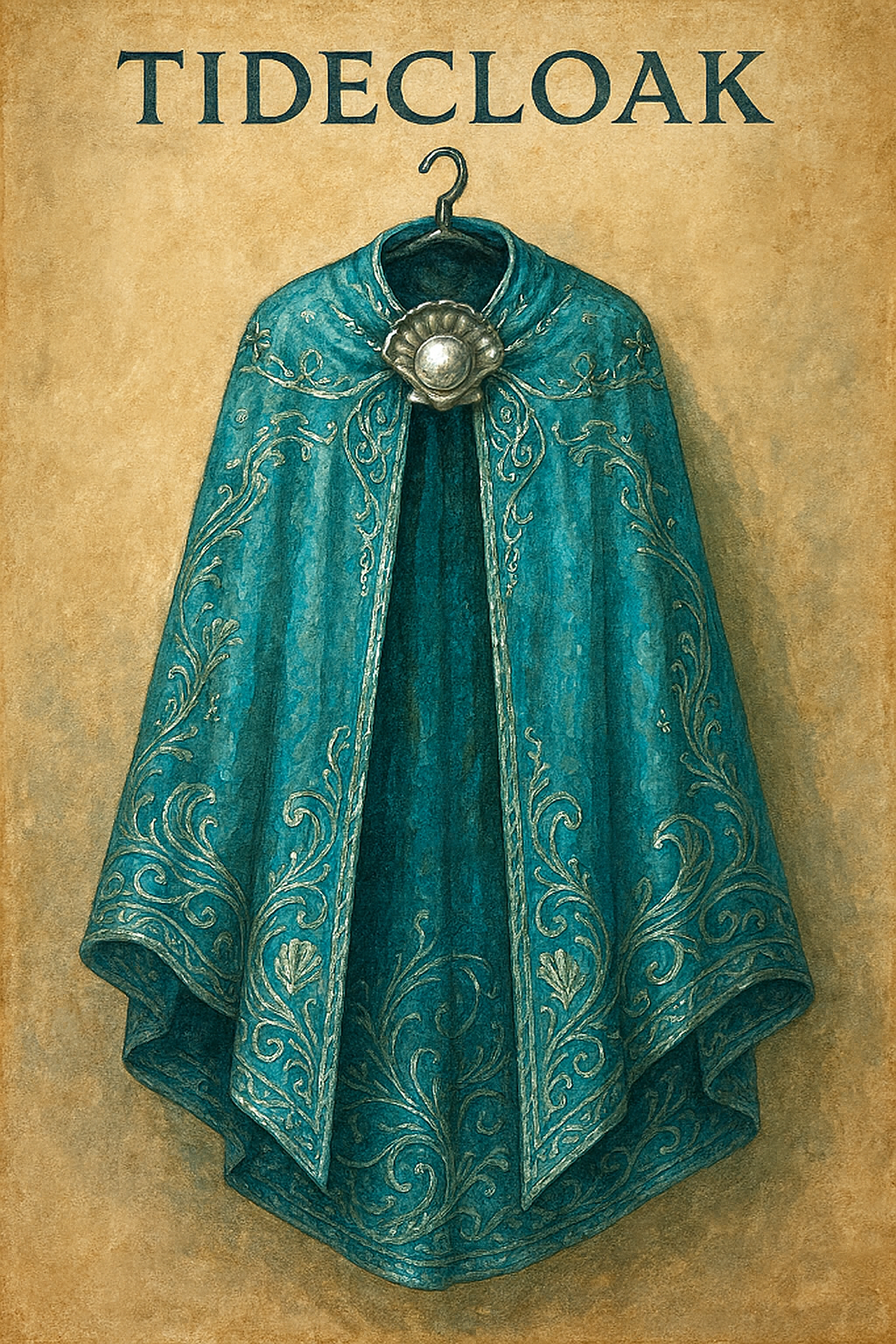
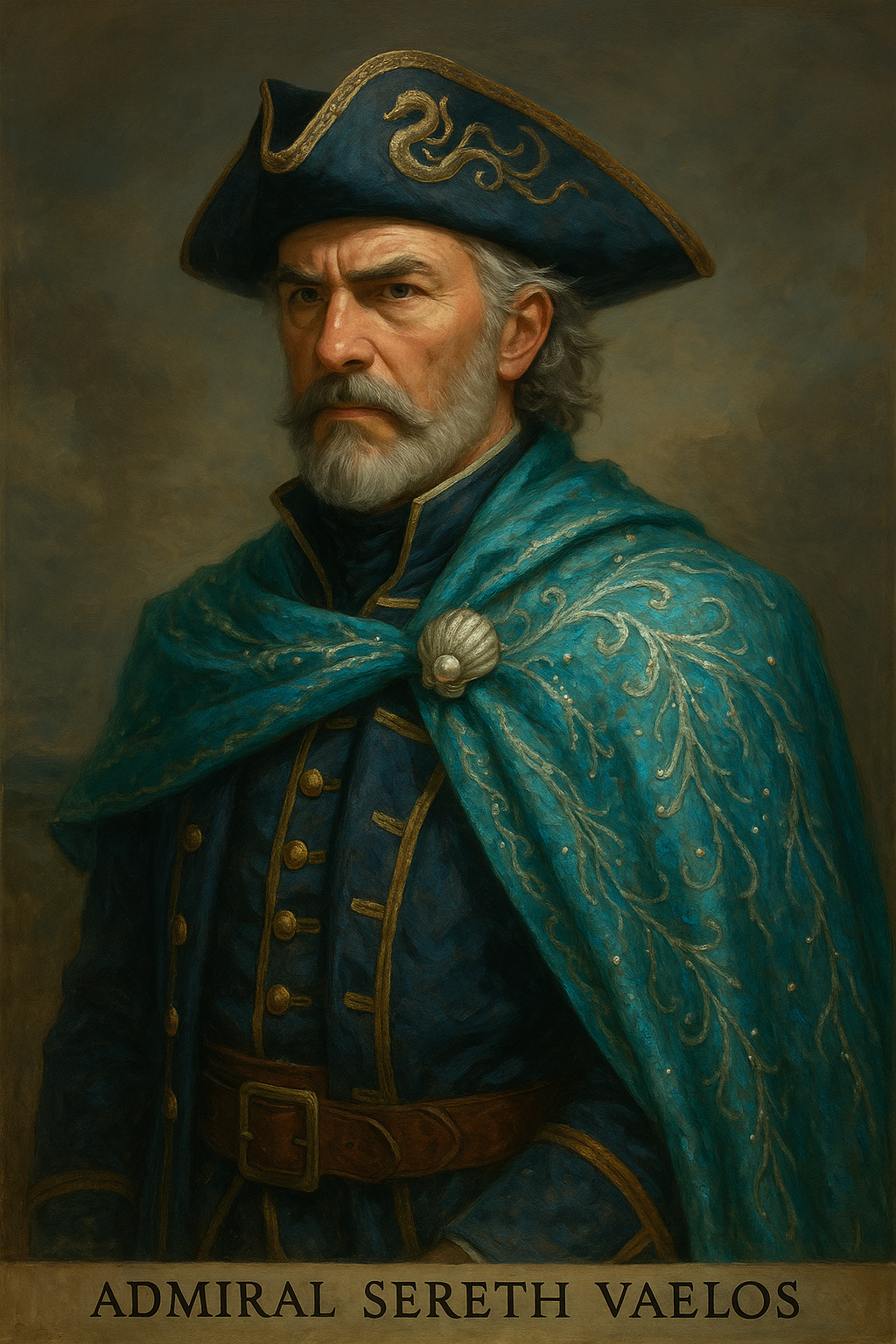
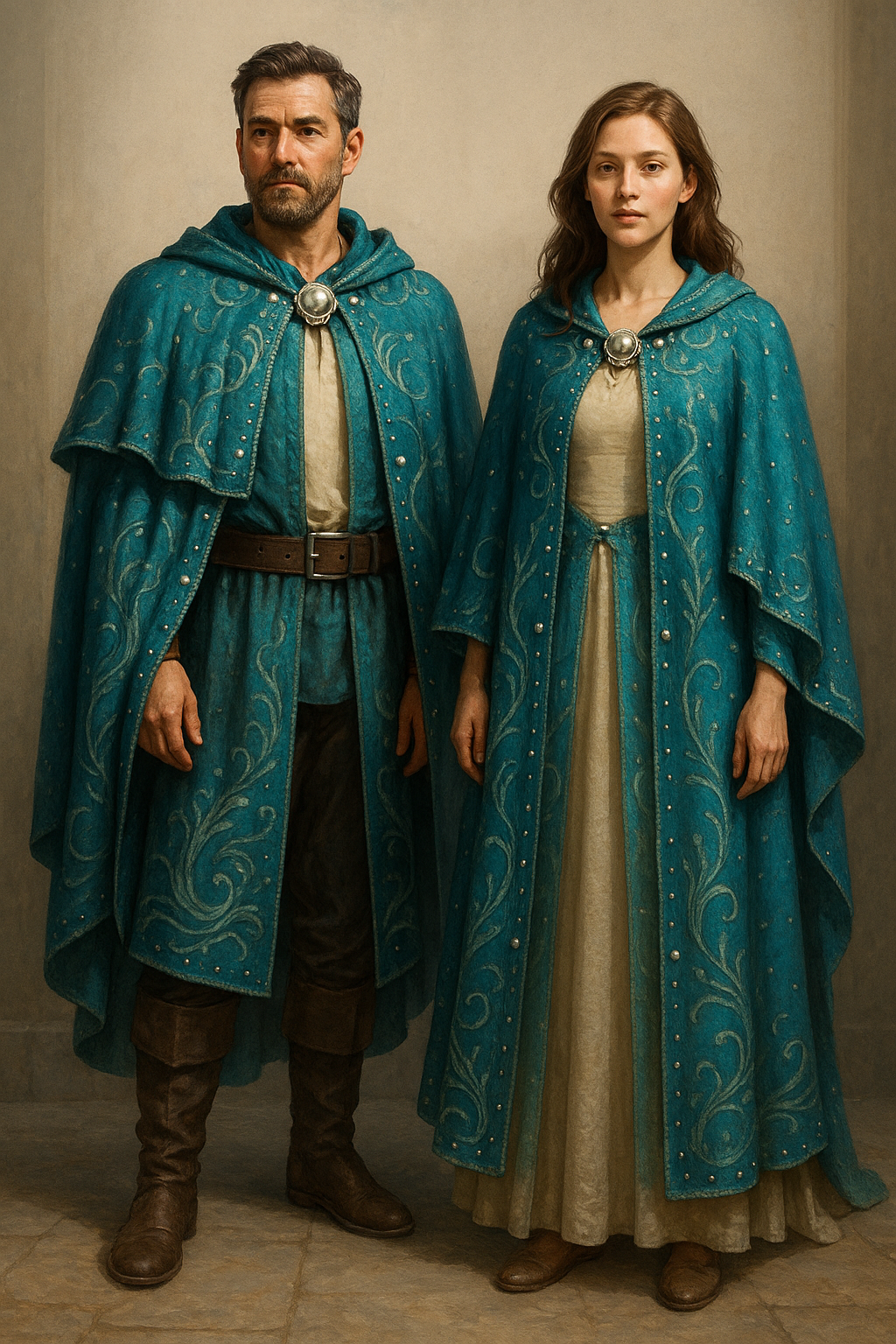

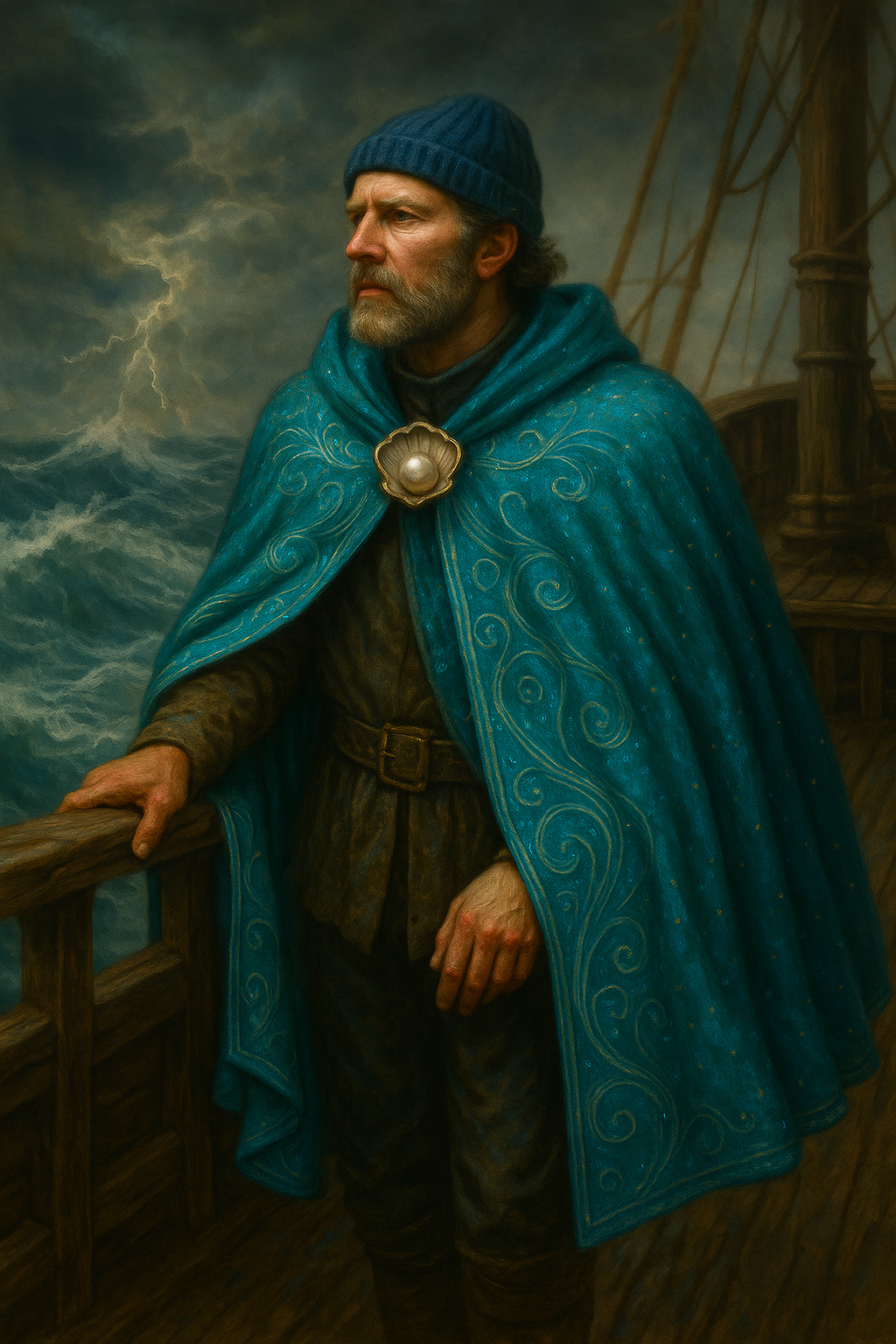

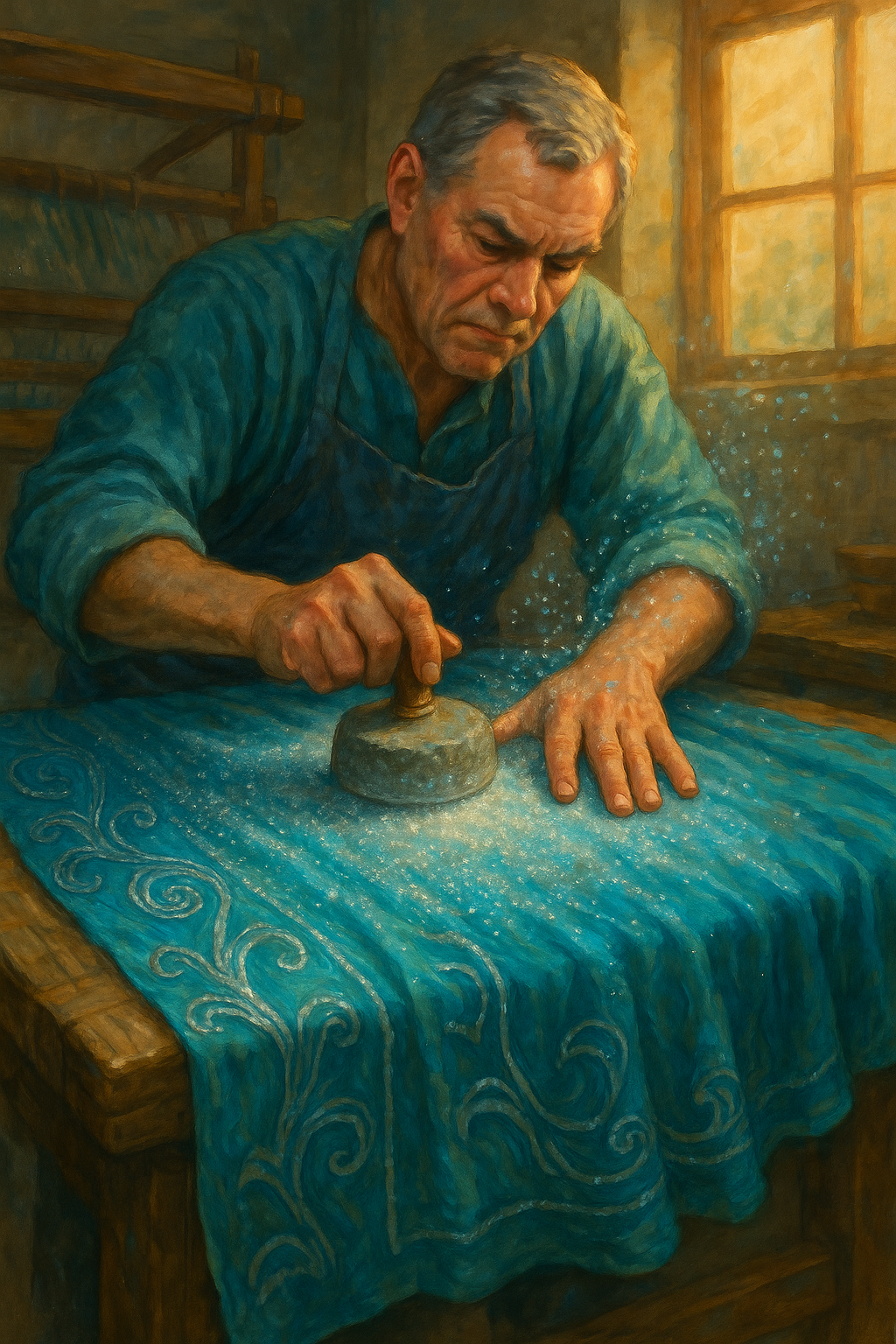







Comments